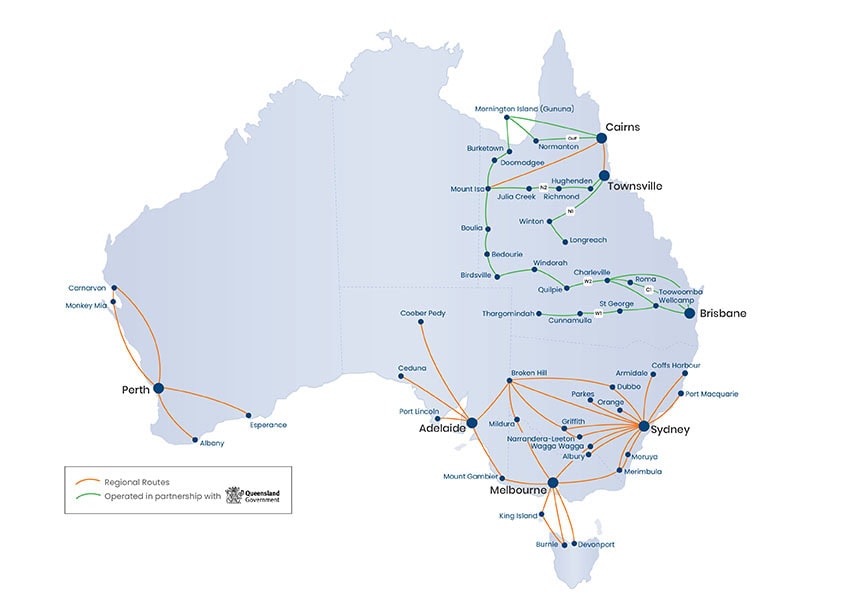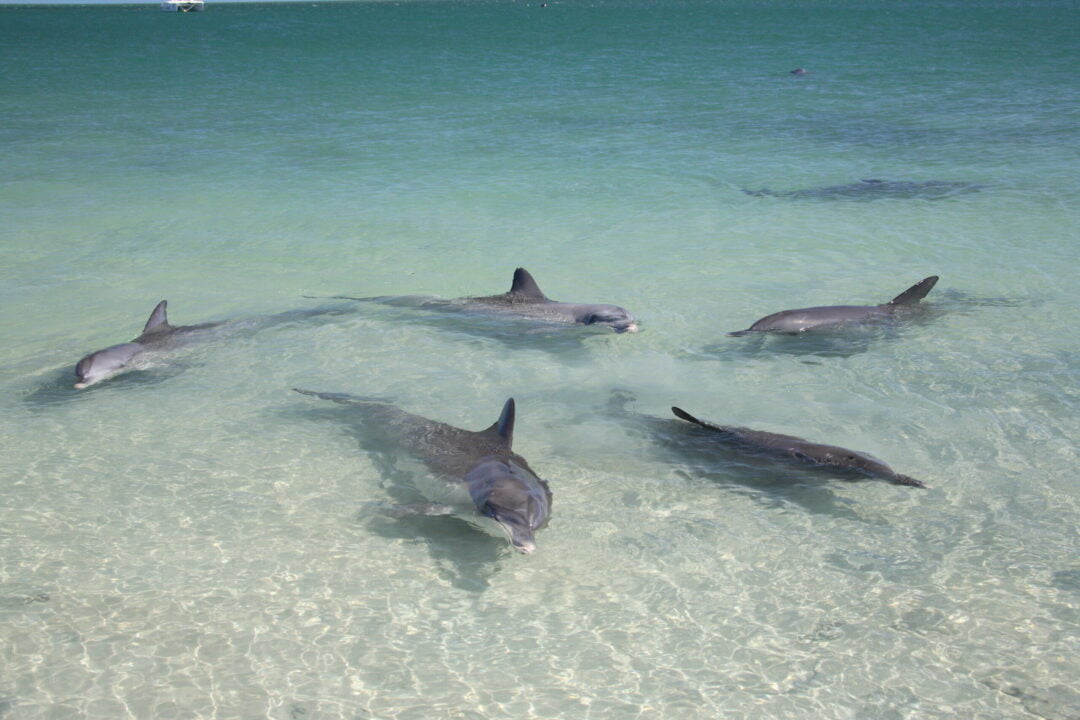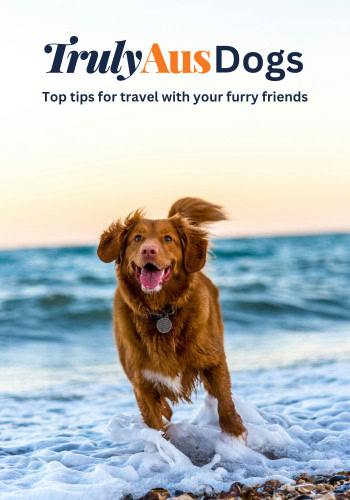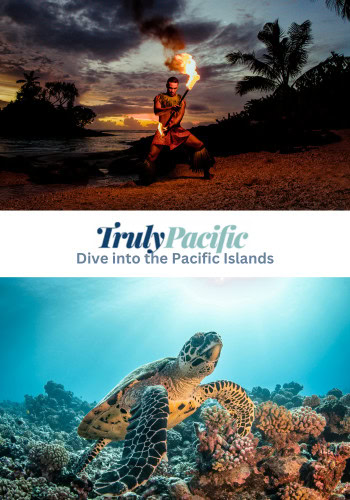Dolphins are the drawcard but they’re only one of many reasons to journey to WA’s famous Monkey Mia.
At the end of a road, where a turquoise bay meets cream sand, hundreds of travellers converge every week. They’re drawn to Monkey Mia Reserve. A sliver of land about 850 kilometres north of Perth, for one reason: bottlenose dolphins. But these aren’t any dolphins and this isn’t your average holiday destination. These friendly pods have been interacting with humans for at least 35 years, making this salty outpost one of Australia’s most iconic locations.
Part of the Shark Bay World Heritage Area in Western Australia, Monkey Mia is of “outstanding global significance”. Partly due to the presence of rare and important plants and animals, says Amy Trezona, a Department of Biodiversity, Conservation and Attractions reserves officer. “It’s one of the few places in the world you can witness incredible dolphin behaviours, such as coastal foraging or calves socialising in the shallows, right from the beach.”

Dolphin Bay Day
The aptly named Dolphin Bay has calmed since my arrival; the seagrass on the shore snatched by the overnight tide. Swathes of tourists eagerly gather on a boardwalk as the morning sky turns pastel. A Parks and Wildlife ranger signals for everyone to line the water’s edge. We all but run for the best vantage point.
Toddlers, teenagers and adults stand shin-deep in the mild water, scanning the surface for dorsal fins. While waiting, we learn how a few female dolphins are fed 10 per cent of their daily food requirements. Ensuring they continue to hunt naturally and teach their calves survival skills. It’s music to my ears.
After hearing about the personalities of the dolphins, one swims to within a metre of me and my three-year-old son; its sleek body easily spotted in the clear water. Another dolphin edges close to a volunteer. Then a third joins the party and we grow louder with excitement.
The 30-minute dolphin experience has changed a lot since the 1980s. No longer are dolphins given fish scraps from fishermen and holidaymakers, as the legend goes. They’re only fed in the morning to allow the remainder of the day for natural activities, says Trezona. (The best time to see them is between 7.30–10am. Reserve fees apply: $15 a day for adults and $5 for children.)
The feeding takes place at one end of RAC Monkey Mia Dolphin Resort. Which in 2018 underwent a $20 million redevelopment that’s increased its size from four to nine hectares. Accommodation now includes dormitories, camp sites, family studios and beachfront villas. There is also a sophisticated restaurant and bar area, resort-style pool, and a general store. As a result, the famous destination has been brought into the 21st century and you can easily pass a few days here. Or you can daytrip from Denham (25km away), with REX flying between Perth and Shark Bay Airport.
If you’re looking to book a stay in Monkey Mia, have a browse here.
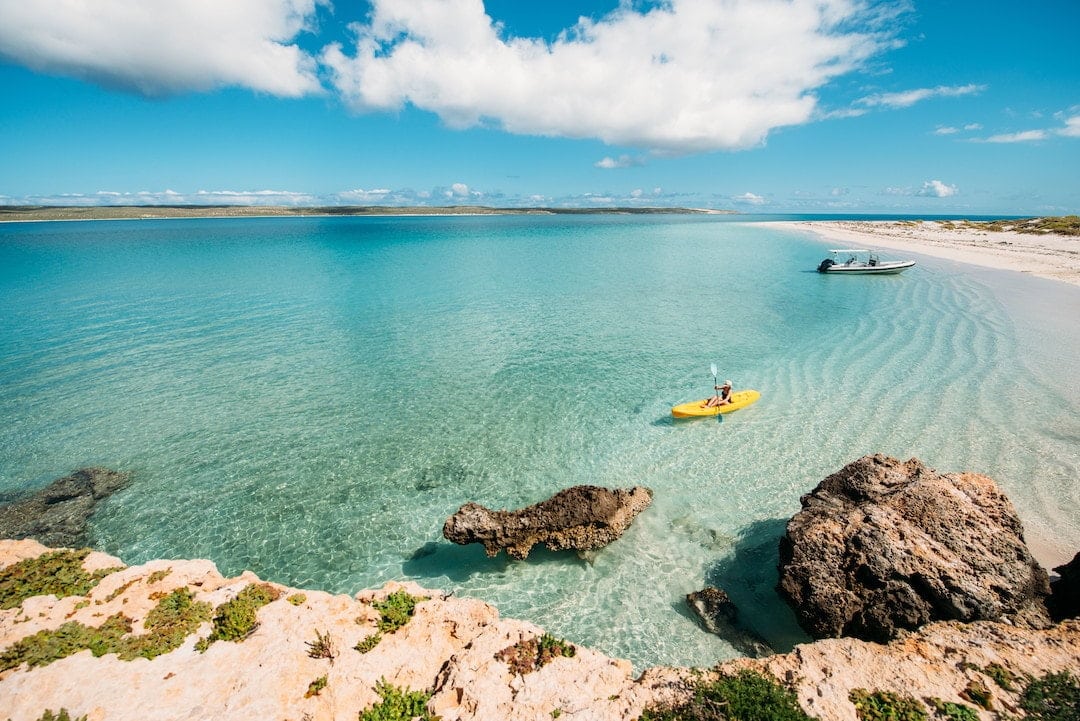
More than dolphins
A lone lugger rests in a glassy bay as a reminder of Denham’s shell farming history. A little up the road, Shark Bay Hotel catches tourists’ eyes with its white-shell bricks, quarried and hard-packed in the early 1900s. Further along, cyclists on the self-guided Denham Discovery Trail come across The Old Pearler Restaurant (a top spot for seafood) and St. Andrews Anglican Church, both built out of cockles in what is a quirky feature of Australia’s westernmost settlement.
Its remoteness ensures Denham has a sleepy vibe. Despite it being a main hub in the Shark Bay area, country of the Malgana, Nanda and Yingkarta people. The town makes a peaceful base for further exploration, not only to Monkey Mia but also into Francois Peron National Park (primarily 4WD), Shell Beach and Hamelin Pool.
About 45 kilometres to the south-east, Shell Beach lures road-trippers keen to set foot on a shore made of miniature shells, blindingly white and rough underfoot. They’re the same cockles literally forming the foundation of Denham.
The local Coral Coast tourism board claims that, in areas, the shells at the beach are up to 10 metres deep and span for more than 70 kilometres. From the car park, visitors crunch over gently rolling dunes to a bottle-green bay perfect for stand-up paddleboarding. It’s bliss and an hour easily passes. But, like the Monkey Mia dolphins, there’s more to see.
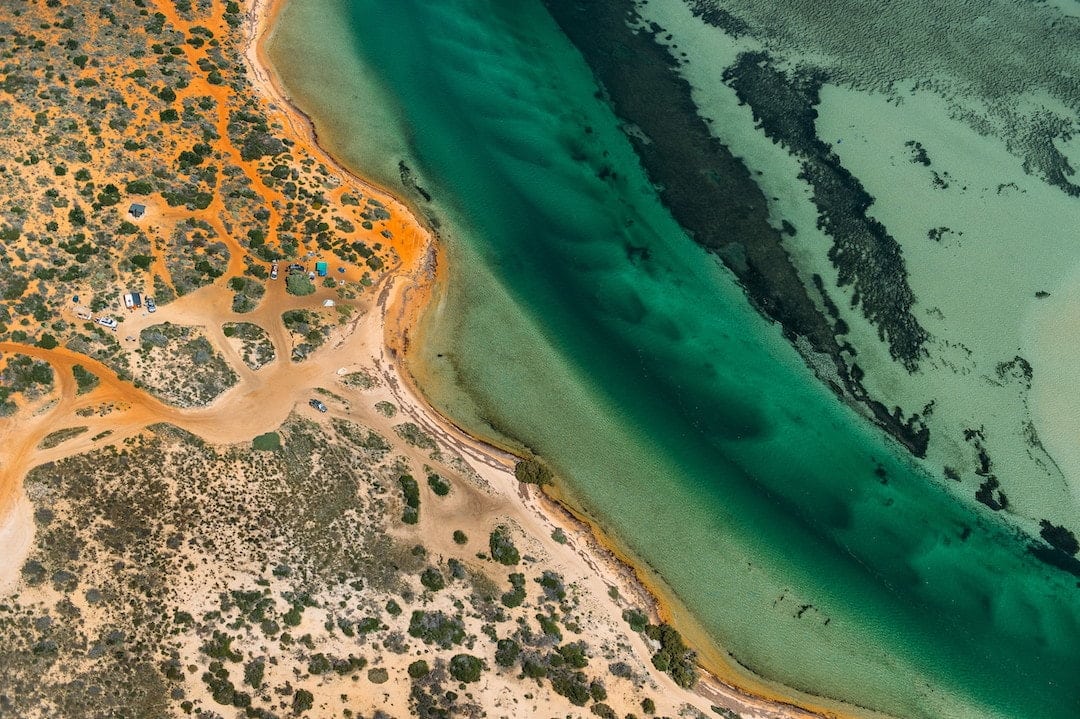
Hamelin Station History and Heritage
Not far away, the ebb and flow of the ocean reveals a fascinating history. To the unwitting, Hamelin Pool is like many other stretches of Australian coastline; low tide exposes a seabed pockmarked with rocks and irregular shapes. But, if you do your research, you’re bound to be impressed by the Hamelin Pool stromatolites, the oldest and largest living fossils on Earth.
“The organisms thrive in the area’s hypersaline water, which is twice as salty as normal seawater” says Elisabeth McLellan from not-profit organisation Bush Heritage Australia.
“They provide a living laboratory to study how life first began and evolved on Earth.”
For an idea of what Earth may have looked like 3.7 billion years ago, visit Hamelin Pool at low tide from a jetty. To make the most of the fossils and Shell Beach, it’s worth unhitching the caravan or nabbing one of the motel-style shearers’ quarters at nearby Hamelin Station, a 200,000-hectare red-dirt property owned by Bush Heritage and managed in partnership with the traditional owners.
In the evenings, travellers gather to share stories in the communal kitchen and dining area. They hatch plans to journey to Steep Point, the westernmost spot on mainland Australia, and learn about the station’s flora and fauna, which includes several threatened species such as the malleefowl, the Hamelin skink and the western grasswren. These species and the fact the reserve is protected are just two reasons this part of Australia is a special place.
“I love being on Hamelin Station Reserve,” says McLellan. “It’s ‘big country’ – big skies, big landscapes, big potential. There’s space to be inspired, to connect with nature, to dream big and to reflect on what’s really important in life.”
I couldn’t have said it better myself.
Click here to read our article on the best beaches in Australia, and check out the best nature and wildlife experiences in the country here!
Travelling to Monkey Mia
Did you know Rex (Regional Express) operates a direct flight from Perth to Monkey Mia? There are also flights from Monkey Mia to Carnarvon. For the latest flight schedules and prices, head over to Rex Airlines.
